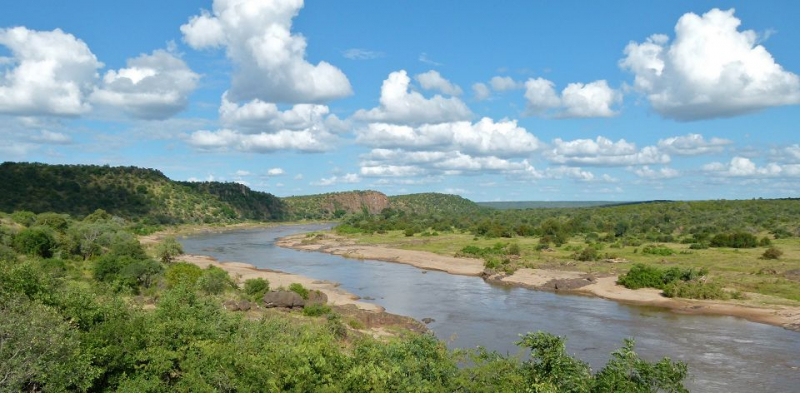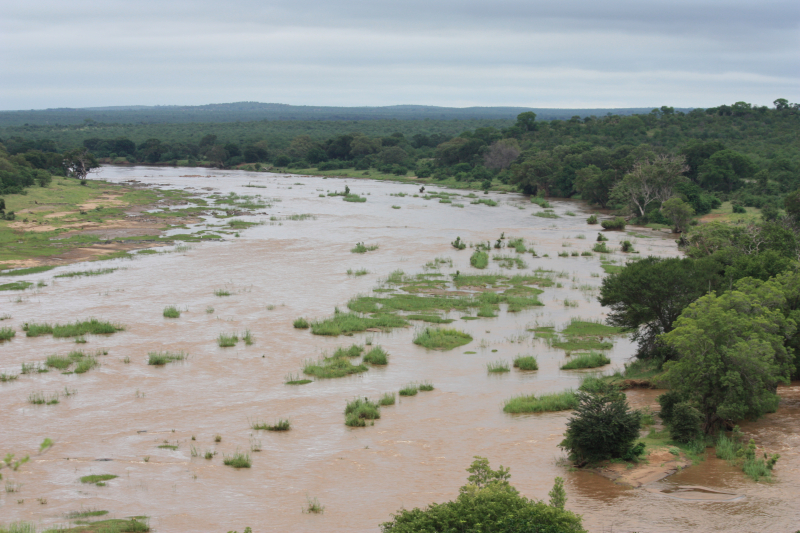Olifants River
The Olifants River, also known as Lepelle, iBhalule, or Obalule, is a tributary of the Limpopo River in South Africa and Mozambique. It is located in the Drainage Area B of South Africa's Drainage Basins. Between the Olifants River and one of its main tributaries, the Steelpoort River, lies Sekhukhuneland, the Pedi people's ancestral homeland.
The Olifants River originates in Mpumalanga Province, between Breyten and Bethal.
It flows north through Witbank Dam and then Loskop Dam, before being forced east by the Transvaal Drakensberg, cutting through at the Abel Erasmus Pass and then flowing east over the Lowveld to join the Letaba River. It reaches Gaza Province, Mozambique, after cutting through the Lebombo Mountains via the Olifants Gorge, becoming the Rio dos Elefantes, and finally joining the Limpopo River 40 kilometers north of Maputo before entering the Indian Ocean at Xai-Xai.
After heavy rains, the river carries away degraded soil due to overgrazing in areas of its middle course. The Olifants River has become one of South Africa's most extensively contaminated rivers, thanks to growing green algae rather than human or industrial trash. According to a 2013 research conducted in the Kruger Park, the river was mesotrophic, meaning that nutrient levels were relatively low, yet a modest rise in nitrates might cause eutrophication. Coal mining and industry in the upper watershed were blamed for the elevated sulphate levels.
Length: 560 km (348 mi- shared with Mozambique)












